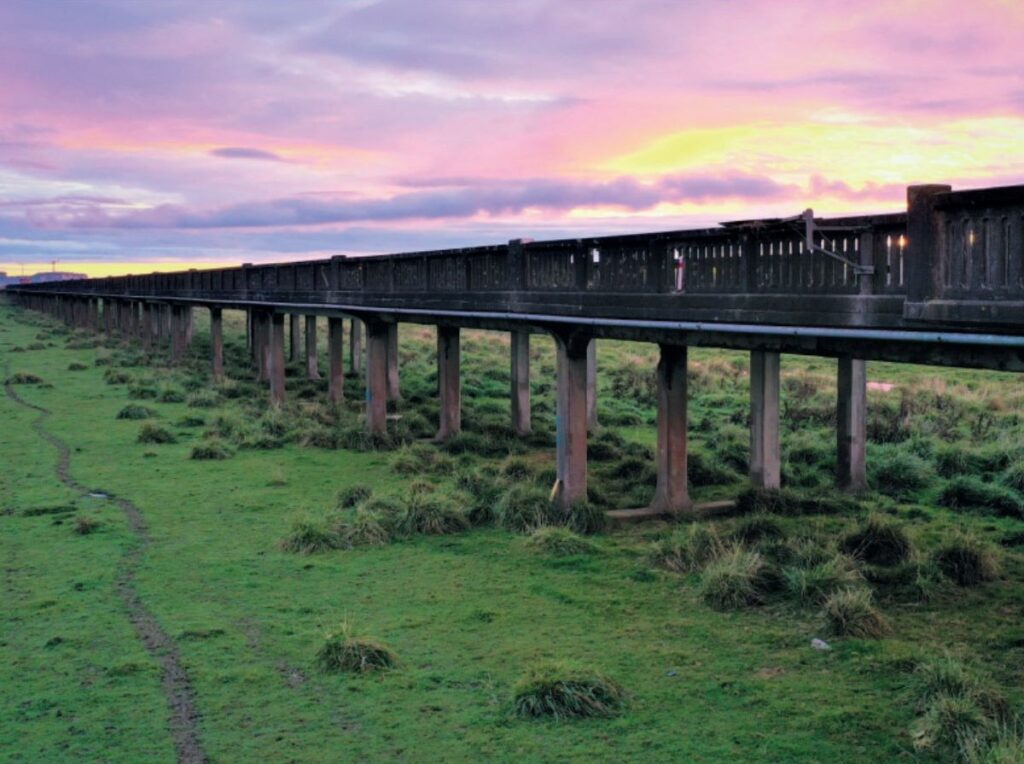Aotearoa New Zealand, with its mountainous terrain and numerous rivers, is a land of many bridges. Thousands of bridges not only keep communities connected but also carry essential services like water, power and communication cables. Many New Zealand bridges were built before modern design codes so we don’t know how they’ll perform in large earthquakes. Te Hiranga Rū QuakeCoRE researchers are making the most of a novel opportunity to find out.
Associate Investigator Lucas Hogan is always on the hunt for old bridges. So, for Lucas and his engineering colleagues at the University of Auckland, the proposed demolition of the original Whirokino bridge was an exciting discovery. The 1.2-kilometre-long trestle bridge, spanning the Manawatū River and floodplain south of Foxton, was deemed too narrow for today’s traffic and has now been replaced. The old bridge represented a rare chance to test a long bridge after 80 years of service and with its piles still in the ground.
To replicate strong ground shaking, piles of the old bridge were pushed and pulled using a hydraulic jack to see how they would perform and what sort of damage they would experience. Columns will be tested in a similar way in the lab later this year. Key to the value of this research is that the old Whirokino bridge was built in 1939 to standard design and construction techniques. Therefore, test results will be useful for exploring the strength of many similar-aged structures.
The fate of the bridge piles was of great interest to Waka Kotahi NZ Transport Agency, who are responsible for maintaining more than 4,500 bridges to keep New Zealand roads open. Close collaboration was also essential between the researchers and bridge demolition contractors. The research was funded by EQC and QuakeCoRE.
The good news is that the piles held strong in the face of powerful forces. This bodes well for many similar bridges. Once column testing is complete, there will be a detailed prognosis of bridge strength with insights into assessment techniques and retrofitting needs. Fragility modelling is underway to estimate the vulnerability of this bridge type to different levels of earthquake hazard.
With this kind of knowledge, it becomes easier to appropriately prioritise bridge strengthening or replacement. And from a risk management perspective, it becomes possible to identify the weak links in the roading network and make plans to minimise isolation of communities before the next damaging earthquake.

